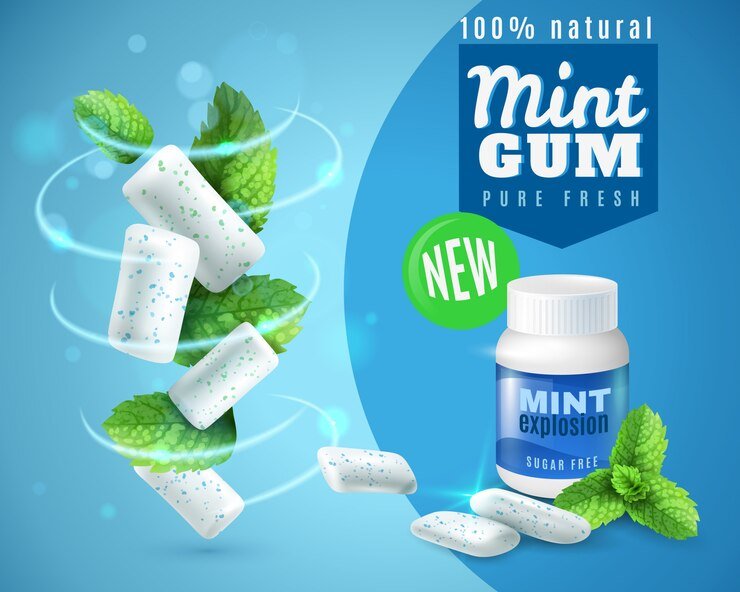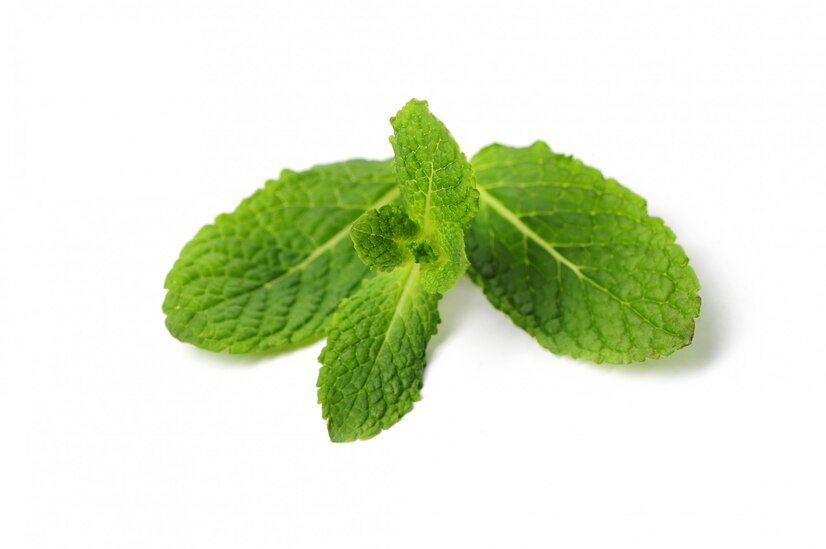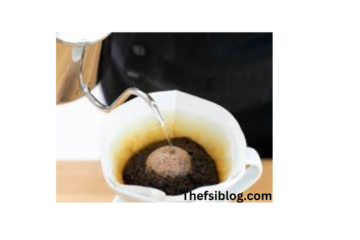Introduction

Mints are more than just a quick fix for fresh breath; they are a versatile and beloved treat with a rich history and a multitude of uses. From soothing digestive issues to adding a burst of flavor in culinary dishes, mints have become a staple in our daily lives. Whether enjoyed as a refreshing candy, brewed in a calming tea, or used in skincare products, mints offer a unique combination of taste, aroma, and health benefits. In this article, we’ll explore the fascinating world of mints, uncovering their surprising benefits and various applications.
Mints are more than just a refreshing treat; they have a long history, numerous varieties, and a range of surprising benefits. Whether you’re popping a mint to freshen your breath, sipping on mint tea, or enjoying a minty dessert, the impact of mints on our daily lives is undeniable. This article explores everything you need to know about mints, including their history, types, health benefits, and much more. With this comprehensive guide, you’ll gain a new appreciation for these tiny but powerful treats.
The History of Mints

Mints have been used for centuries, dating back to ancient civilizations. The ancient Egyptians, Greeks, and Romans all valued mints for their medicinal properties and refreshing taste. In ancient Rome, mints were used in cooking and even as a symbol of hospitality. Guests were often greeted with mint leaves, symbolizing a warm welcome.
Over time, the popularity of mints spread across the world. In the Middle Ages, mints were commonly used for their digestive benefits. They were also believed to have mystical properties, with some cultures using them in rituals to ward off evil spirits.
Today, mints are a global sensation, enjoyed in a variety of forms, from candies and teas to essential oils and beauty products.
Types of Mints
There are several types of mints, each with its own unique flavor and characteristics. Some of the most popular varieties include:
1. Peppermint
Peppermint is perhaps the most well-known type of mint. It has a strong, refreshing flavor and is commonly used in candies, teas, and essential oils. Peppermint is also known for its digestive benefits, often used to relieve symptoms of indigestion and irritable bowel syndrome (IBS).
2. Spearmint
Spearmint has a milder flavor compared to peppermint, making it a popular choice for chewing gum and toothpaste. It’s also used in cooking, particularly in Mediterranean and Middle Eastern cuisine. Spearmint is known for its calming properties and is often used in herbal teas to promote relaxation.
3. Chocolate Mint
Chocolate mint is a unique variety that combines the refreshing taste of mint with a hint of chocolate. This type of mint is popular in desserts, particularly in baking. It’s also used in flavored teas and cocktails, adding a delightful twist to traditional recipes.
4. Apple Mint
Apple mint, also known as woolly mint, has a subtle apple-like flavor. It’s commonly used in fruit salads, beverages, and as a garnish for desserts. Apple mint is also popular in herbal medicine, where it’s used to treat digestive issues and respiratory problems.
5. Pineapple Mint
Pineapple mint is a variegated variety of mint with a hint of pineapple flavor. It’s often used as a decorative plant due to its attractive appearance. In the kitchen, pineapple mint is used in salads, beverages, and desserts, adding a tropical twist to dishes.
Health Benefits of Mints
Mints offer a range of health benefits, making them more than just a tasty treat. Here are some of the top health benefits associated with mints:
1. Aids Digestion
One of the most well-known benefits of mints is their ability to aid digestion. Peppermint, in particular, is effective in relieving symptoms of indigestion, bloating, and gas. The menthol in peppermint helps relax the muscles of the gastrointestinal tract, making it easier for food to pass through.
2. Freshens Breath
Mints are widely used for their breath-freshening properties. The strong, refreshing flavor of mints helps mask odors, making them a popular choice for after meals or before social interactions. In addition to masking bad breath, some mints also have antibacterial properties that help kill the bacteria responsible for bad breath.
3. Relieves Headaches
Peppermint oil, derived from peppermint leaves, is often used as a natural remedy for headaches. The menthol in peppermint oil has a cooling effect that helps relax muscles and reduce tension, making it effective in relieving tension headaches and migraines.
4. Promotes Respiratory Health
Mints, particularly peppermint and spearmint, are known for their ability to promote respiratory health. The menthol in mints helps open up the airways, making it easier to breathe. This makes mints a popular choice for treating symptoms of colds, allergies, and asthma.
5. Boosts Mental Alertness
The refreshing scent of mints has been shown to boost mental alertness and improve cognitive function. Inhaling the scent of peppermint, for example, has been found to enhance memory and increase alertness. This makes mints a great choice for a quick pick-me-up during long workdays or study sessions.
6. Alleviates Nausea
Mints are also effective in alleviating nausea, particularly peppermint. The soothing properties of peppermint help calm the stomach and reduce feelings of nausea. This makes peppermint a popular choice for pregnant women experiencing morning sickness and for individuals suffering from motion sickness.
Mints in Cooking and Baking
Mints are a versatile ingredient that can be used in a variety of dishes, from savory to sweet. Here are some popular ways to use mints in cooking and baking:
1. Mint Tea
Mint tea is a refreshing beverage that can be enjoyed hot or cold. It’s easy to make by steeping fresh or dried mint leaves in hot water. Mint tea is not only delicious but also offers several health benefits, including aiding digestion and promoting relaxation.
2. Mint Sauces and Dressings
Mints can be used to make flavorful sauces and dressings. Mint sauce is a popular condiment for lamb dishes, particularly in British cuisine. Mint dressings are also a great addition to salads, adding a refreshing twist to greens and vegetables.
3. Mint Desserts
Mints are commonly used in desserts, adding a refreshing flavor to sweets. Chocolate and mint are a classic combination, often used in cookies, cakes, and ice creams. Mint leaves can also be used as a garnish for desserts, adding both flavor and visual appeal.
4. Mint Cocktails
Mints are a popular ingredient in cocktails, adding a fresh and vibrant flavor to drinks. The classic Mojito, made with mint, lime, sugar, rum, and soda water, is a favorite among many. Mints can also be used in other cocktails, such as the Mint Julep and the Southside.
5. Mint-Infused Water
For a refreshing and healthy beverage, try adding mint leaves to your water. Mint-infused water is a great way to stay hydrated while enjoying the subtle flavor of mints. You can also add other ingredients, such as cucumber or lemon, to enhance the flavor.
Mints in Beauty and Wellness
Mints are not only beneficial for your health but also for your beauty and wellness routine. Here are some popular ways to use mints in beauty and wellness:
1. Mint Face Masks
Mints are a popular ingredient in face masks due to their cooling and soothing properties. Mint face masks can help reduce inflammation, clear up acne, and brighten the complexion. You can make a simple mint face mask by blending fresh mint leaves with yogurt or honey.
2. Mint Body Scrubs
Mint body scrubs are great for exfoliating the skin and leaving it feeling refreshed. The cooling effect of mint helps invigorate the skin, making it a popular choice for body scrubs. You can make a DIY mint body scrub by mixing sugar, coconut oil, and fresh mint leaves.
3. Mint Lip Balm
Mint lip balm is a popular choice for keeping lips soft and hydrated. The refreshing flavor of mint adds a pleasant tingle to the lips, while the moisturizing properties of mint help prevent chapping. You can make your own mint lip balm by mixing beeswax, coconut oil, and peppermint essential oil.
4. Mint Aromatherapy
The refreshing scent of mints makes them a popular choice for aromatherapy. Mint essential oils, such as peppermint and spearmint, are commonly used to relieve stress, improve focus, and boost energy levels. You can use mint essential oils in a diffuser, or add a few drops to your bath for a relaxing experience.
5. Mint Hair Care
Mints are also beneficial for hair care. Peppermint oil, in particular, is known for its ability to stimulate hair growth and reduce dandruff. You can add a few drops of peppermint oil to your shampoo or conditioner for a refreshing and invigorating hair treatment.
FAQs about Mints
1. Are mints good for digestion?
Yes, mints are known for their digestive benefits. Peppermint, in particular, is effective in relieving symptoms of indigestion, bloating, and gas.
2. Can mints help with bad breath?
Yes, mints are commonly used to freshen breath. The strong, refreshing flavor of mints helps mask odors, and some mints also have antibacterial properties that help kill the bacteria responsible for bad breath.
3. Are mints safe for pregnant women?
Mints are generally safe for pregnant women, and peppermint is often used to alleviate nausea associated with morning sickness. However, it’s always a good idea to consult with a healthcare provider before using any herbal remedies during pregnancy.
4. Can mints help with headaches?
Yes, peppermint oil, derived from peppermint leaves, is often used as a natural remedy for headaches. The menthol in peppermint oil has a cooling effect that helps relax muscles and reduce tension.
5. How can I use mints in cooking?
Mints are a versatile ingredient that can be used in a variety of dishes, from teas and sauces to desserts and cocktails. Some popular ways to use mints in cooking include making mint tea, mint sauces, and mint-infused water.
Conclusion
Mints are more than just a refreshing treat; they offer a range of health benefits, are a versatile ingredient in cooking, and are a valuable addition to your beauty and wellness routine. Whether you enjoy them as a candy, a tea, or in a homemade face mask, mints have a place in every aspect of our lives. With their rich history, diverse types, and numerous benefits, it’s no wonder mints have been cherished for centuries. So, the next time you reach for a mint, remember that you’re not just enjoying a tasty treat—you’re also reaping the many benefits that mints have to offer.
You can see lates updates on: thefsiblog



